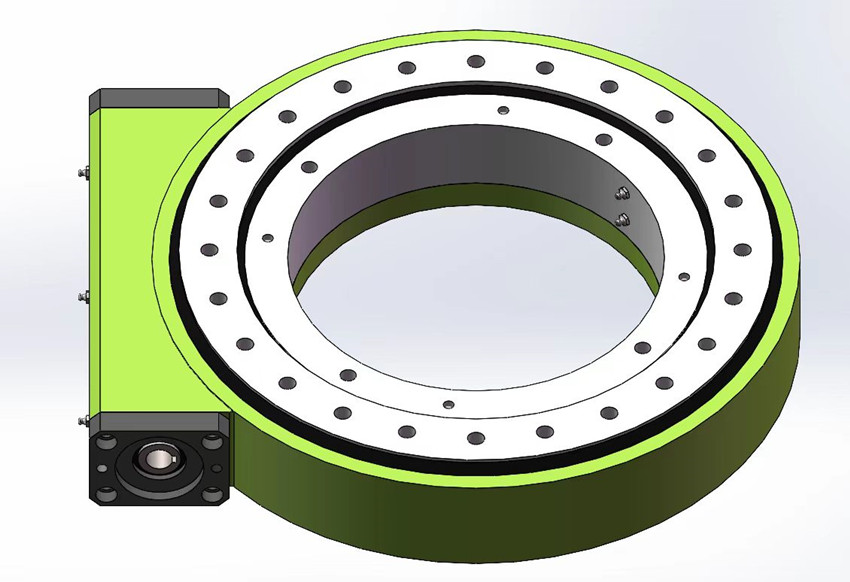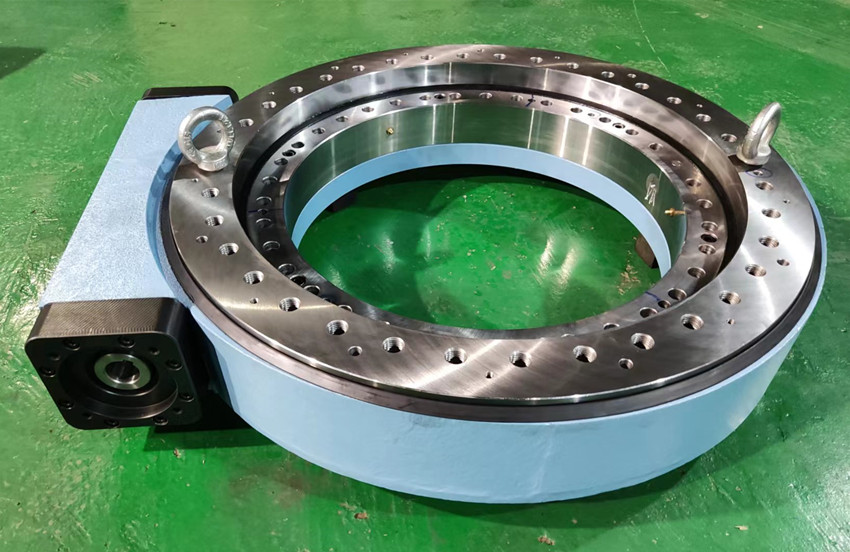What is a slewing drive and how it works?

The slewing drive is a complete system assembly that can be easily installed and integrated into existing system programs.
It is composed of ball slewing bearing or cylindrical roller slewing bearing, worm, shell and other parts that can bear axial, radial and overturning moments at the same time. The worm is driven by a hydraulic motor or motor to drive the slewing bearing to rotate. The surface of the housing is spray-coated and fully enclosed with seals to protect the slewing drive from contamination, damage and grease loss.
These components are assembled together to avoid customers installing various mating components, and we can also provide a variety of size standards.

The outstanding advantages of the slewing drive are as follows:
• The design is very compact, suitable for installation of mechanical equipment with limited space.
• Very high load carrying capacity in a very compact design.
• long lasting.
• Low maintenance costs.
• Cast housing protects internal parts.
Slewing drives are used worldwide for:
• Vehicle and crane systems.
• Rotation of attachments such as excavators, hydraulic tongs and forklifts.
• Facility management (automated systems).
• Loading and unloading equipment.
• Positioning Systems.
The rotary motion of the slewing drive is driven by a hydraulic motor or an electric motor. It is easy to find a matching hydraulic motor in the market, and it also conforms to industry standards, which can save a lot of time. For the motors, however, some device adapters are also required.
The housing of the slewing drive is a cast part and can be dimensioned according to customer requirements. The closed housing protects the swing system from contamination, damage and grease loss, ensuring smoother operation and longer life of the swing drive.
Additionally, labyrinth seals mounted on the housing structure protect the interior of the assembly from contamination if the swing drive is used in wet or dirty environments. Because the performance and reliability of the slewing drive depends to a large extent on the internal stability. It is worth noting that high-pressure water guns cannot be used to clean the swing drive, as the pressurized water will penetrate the seal and enter the inside of the swing drive, which will greatly reduce the service life.
Slewing drives can be used in temperatures ranging from -20°C to 70°C.
Proper and regular lubrication is required to ensure stable operation and long service life of the slewing drive. Grease is conducive to the better functioning of the rotary drive, reducing wear, reducing noise during operation, extending service life and reducing heat generation.
Periodically lubricate with a grease compatible with the seal material, depending on the frequency of use and ambient operating conditions.
It is best to fill the slewing drive with the same lubricating oil that was originally used. If you wish to use another type of grease, you must verify that the grease is compatible with the originally used grease. In addition, regular relubrication is recommended during operation and after extended periods of non-use or cleaning.
Grease that has been aged but not used should be replaced if it has not been used after three years. Also, greases must not be mixed with different thickeners and base oils.


